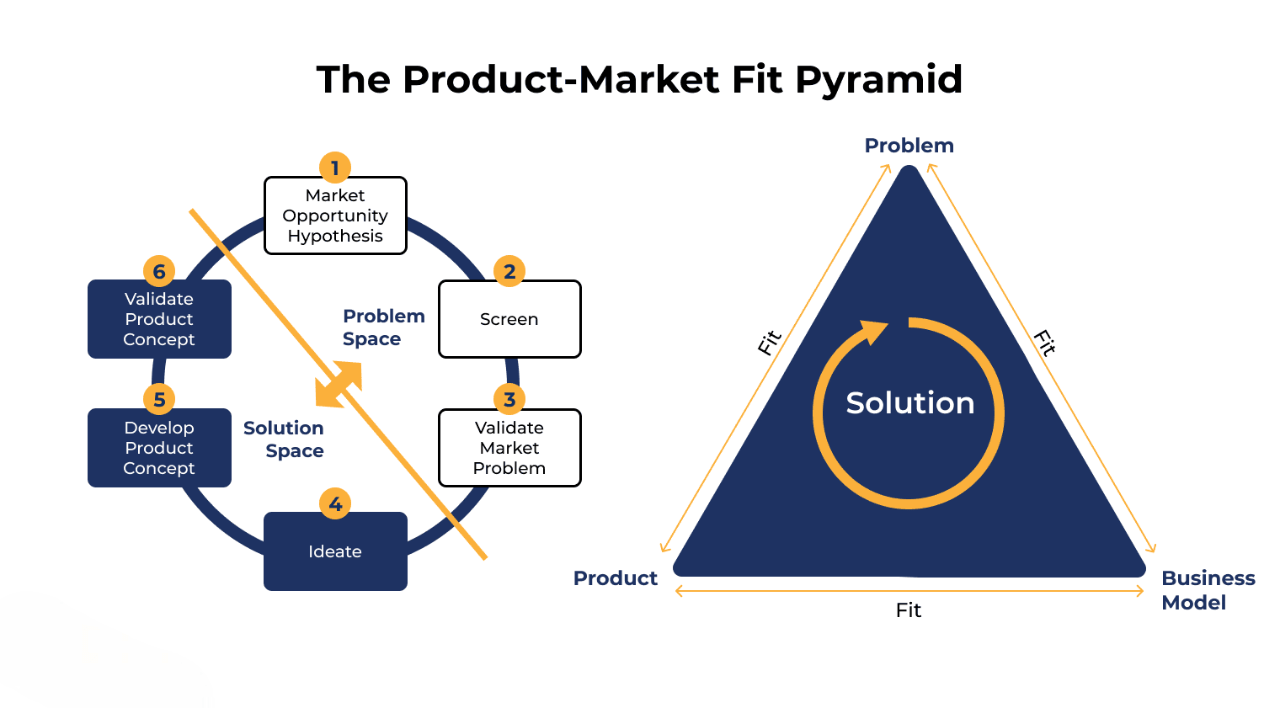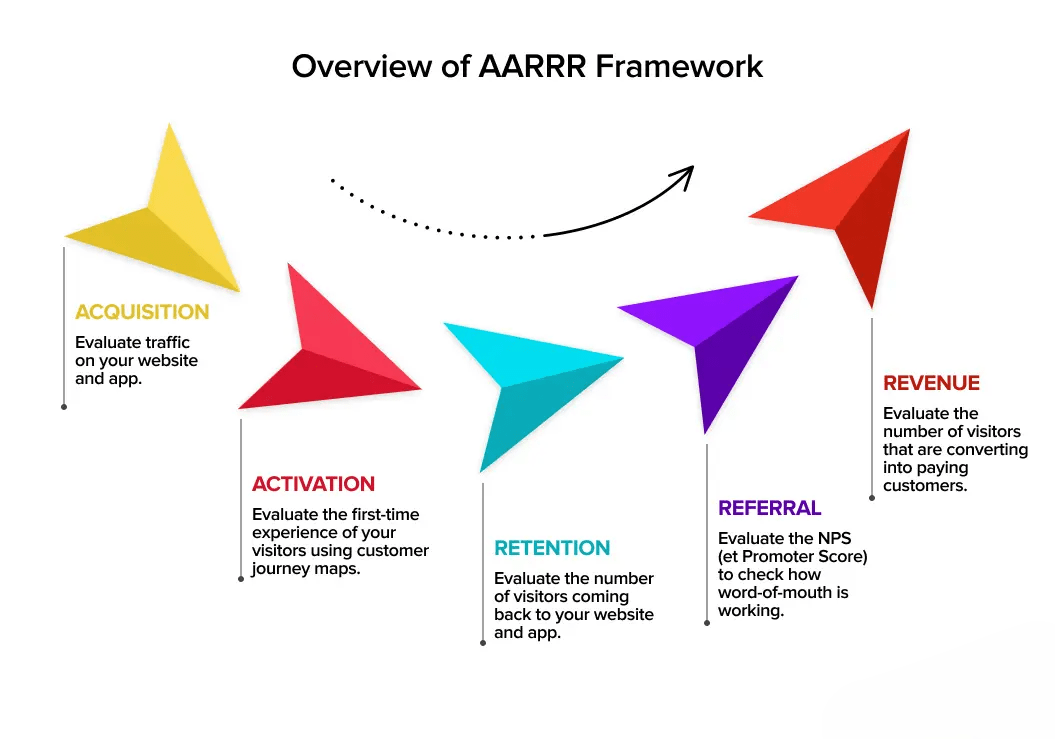
- Introduction
- What is Product-Market Fit?
- The Importance of Product-Market Fit
- How to Achieve Product-Market Fit
- Signs You’ve Achieved Product-Market Fit
- The Role of Customer Feedback in Product-Market Fit
- Challenges in Achieving Product-Market Fit
- The Relationship Between Product-Market Fit and Business Growth
- Common Mistakes in the Search for Product-Market Fit
- Conclusion: Product-Market Fit as a Business Growth Strategy
Introduction
The ultimate goal when building a business is sustainable growth and long-term success. Yet, many companies fail to reach that level of success because they skip a critical phase in their journey Product-Market Fit (PMF). Achieving PMF is often the secret behind the most successful startups and companies. Without it, businesses struggle to scale and build a loyal customer base. Whether you’re launching a new venture or managing a project, skills like those gained through PMP Training can help ensure structured growth and alignment with market needs. In this blog, we will dive deep into the concept of product-market fit, why it’s crucial for business growth, and how to achieve it.
What is Product-Market Fit?
Product-market fit refers to the alignment between a product and the market it serves. Simply, it’s when a company’s product satisfies a strong market demand. This is a state where customers are not just willing to pay for the product but actively seek it out because it effectively meets their needs. The term was popularized by Marc Andreessen, a Silicon Valley entrepreneur who defined PMF as “being in a good market with a product that can satisfy that market.” When you achieve product-market fit, you know that your product has found its audience and is meaningfully meeting their needs. A clear Product Roadmap can play a key role in achieving and maintaining product-market fit by aligning development with customer needs and strategic goals.
Become a Project Management expert by enrolling in this PMP Training Online Course today.
How to Achieve Product-Market Fit
Achieving product-market fit is not a one-time task but an ongoing process. The following steps outline a framework for getting there:
1. Understand the Problem You’re SolvingTo build a product that resonates with customers, you must first understand their pain points. Conduct thorough market research, surveys, and interviews with potential customers to understand their problems.
2. Develop a Minimum Viable Product (MVP)An MVP is a product with just enough features to meet the basic needs of your target market. It allows you to test your hypotheses and gather feedback without investing too much time or money.
3. Test, Test, TestOnce you have your MVP, it’s time to test it with real users. Gather their feedback, iterate on the product, and repeat the testing process.
4. Measure Product-Market FitThere are various ways to measure PMF, but one standard metric is the Net Promoter Score (NPS). A high NPS (above 50) typically indicates strong PMF. Alternatively, the customer retention rate or the level of product usage can also help gauge fit. Teams that adopt frameworks like What is Agile often have an easier time iterating quickly based on feedback, which supports achieving and sustaining product-market fit.
5. Iterate Based on FeedbackConstant iteration based on customer feedback is crucial for achieving PMF. Stay close to your customers, listen to their concerns, and be willing to pivot if needed.
Advance your Project Management career by joining this PMP Training Online Course now.
Signs You’ve Achieved Product-Market Fit
While reaching PMF isn’t always a clear-cut process, several key signs indicate you’re on the right track:
- Customer Retention: You have customers who repeatedly use your product and seem deeply engaged.
- Positive Word-of-mouth: People are recommending your product to others.
- Increased Demand: You notice a steady growth in organic traffic or sign-ups without heavy advertising.
- Customer Satisfaction: Feedback is overwhelmingly positive, and users are genuinely satisfied with the product.
- Revenue Growth: You see a spike in conversions and consistent revenue growth.
If your business exhibits these signs, you’re likely close to or already have product-market fit.

The Role of Customer Feedback in Product-Market Fit
Customer feedback is critical in the pursuit of product-market fit. Businesses must listen to their customers to build a product that meets the Market’s needs. Here’s how customer feedback contributes:
- Validating Assumptions: In the product development phase, feedback can help validate or invalidate your assumptions about the market needs.
- Refining the Product: Continuous feedback helps fine-tune the product features and functionality to serve customers better.
- Identifying New Opportunities: Customer insights can reveal new pain points or opportunities you hadn’t initially considered. Gaining the right project management skills through PMP Training can help you systematically evaluate these insights and turn them into actionable growth strategies.
Remember, the more responsive you are to customer feedback, the more likely you will achieve PMF.
Challenges in Achieving Product-Market Fit
The journey to product-market fit isn’t always smooth. Several challenges can hinder progress:
- Unclear Market Needs: Sometimes, businesses struggle to understand the Market’s real needs, leading to products that don’t fit.
- Overlooking User Feedback: Ignoring or misinterpreting customer feedback can derail efforts to achieve PMF.
- Speed vs. Quality: Some businesses rush product development in the rush to scale, leading to a subpar offering.
- Market Saturation: Entering a crowded market can make it difficult to stand out, even if your product is great.
Overcoming these challenges requires patience, adaptability, and a strong focus on the customer.

The Relationship Between Product-Market Fit and Business Growth
Product-market fit and business growth are tightly linked. Once you’ve achieved PMF, the next challenge is scaling your business. Here’s how they’re connected:
- More Efficient Growth: When a product fits the Market, it’s easier to scale. Marketing, sales, and customer service become more streamlined because you already have a product that resonates with the target audience.
- Funding Opportunities: Investors are more likely to back companies that have achieved PMF because it reduces the risk and shows that the business has a viable product.
- Attracting Talent: Companies with product-market fit tend to attract top talent because employees want to work on something with proven demand and growth potential. Teams often evaluate methodologies like Scrum vs Kanban to choose the best framework for managing work effectively in high-growth environments.
Achieving PMF is the green light for business growth, setting the foundation for expansion.
Are you getting ready for your PMP interview? Check out our blog on PMP Interview Questions and Answers!
Common Mistakes in the Search for Product-Market Fit
Many startups and businesses make common mistakes when trying to achieve product-market fit:
- Focusing on Features, Not Problems: Many entrepreneurs get caught up in building the perfect product rather than solving the core problems of their target audience.
- Scaling Too Quickly: Rushing to scale before achieving product-market fit can result in wasted resources and unsatisfied customers.
- Ignoring Metrics: Failing to track key metrics such as customer feedback, retention rates, and engagement can lead to disastrous results.
- Not Pivoting When Needed: Sometimes, businesses stubbornly stick with a product even when it does not meet market needs. Being open to pivoting is essential.
Common Challenges in Managing a Sprint Backlog
Managing a Sprint Backlog comes with its own set of challenges:
- Scope Creep: The temptation to add new tasks or features outside the original Sprint goal can lead to scope creep, which may cause the team to become overwhelmed and lose focus. Applying principles from What is Design Thinking can help teams stay user-centered and prioritize features that truly solve customer problems, reducing unnecessary additions.
- Unclear Tasks: Sometimes, tasks in the backlog are not well-defined, which can create confusion and result in work being delayed or misaligned.
- Overloaded Backlog: Teams may try to load too many tasks into the Sprint Backlog, leading to burnout and an inability to complete everything within the Sprint.
- Lack of Collaboration: Without active participation from the entire Scrum team, including the Product Owner and Scrum Master, the Sprint Backlog may fail to reflect accurate priorities or capacity.
Conclusion
Product-market fit is the foundation for sustainable business growth. Achieving PMF is not a one-time event but an ongoing process that requires continuous customer engagement, iteration, and flexibility. Once you achieve product-market fit, scaling your business becomes more straightforward, and growth opportunities naturally follow. So, if you’re starting or looking to scale your business, remember that product-market fit is the secret to business growth. Focus on solving real problems, listen to your customers, and iterate until you’ve found the perfect market-product match. Investing in skill development, such as PMP Training, can also support structured growth and help guide your team through the complex journey to PMF. The road to PMF may be challenging, but the rewards of loyal customers, steady revenue growth, and long-term success are well worth the effort.





